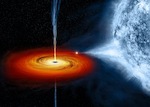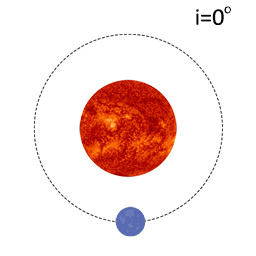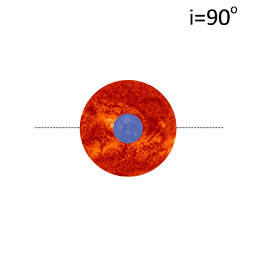The mass of the black hole's companion

Evidence for both the binary nature of HDE226868 and the link with Cygnus X-1 came when the Copernicus satellite took a closer look at the X-ray source. It was discovered that the overall intensity of the X-rays drops off slightly every 5.6 days – the same time it take for HDE226868 to make one revolution around its partner. Now, the X-rays do not drop off completely, so the X-ray source doesn't move completely behind the star from our point-of-view. At the same time, the X-rays do diminish, so the star does partially block the X-ray source as they orbit. This gives us a clue as to its inclination.
As a refresher, if a system is face-on, or the inclination is 0° the X-ray source would never be blocked.

If the system was edge-on, or the inclination is 90°, then X-ray source would be blocked completely for a portion of each orbit.

Since the X-ray source is partially blocked on each orbit, the system must be inclined at some angle between 0° and 90°. The best estimate for the inclination angle of the Cyg X-1 system is ~30°, though we may have to wait for future missions to get a more definitive answer.

Don't forget to make a note of this – you'll need it to solve the equation!
 Return to solving the binary equation for the black hole mass
Return to solving the binary equation for the black hole mass


